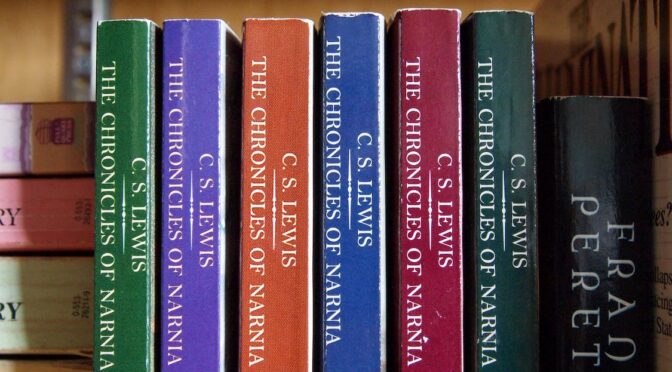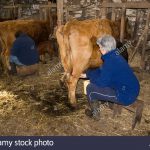Early in 2021, my two brothers and I collaborated in writing personal stories of our childhood and young adulthood, growing up in a village in Ontario. Canada. It became a book, professionally printed, bound and published in a volume called, The Gillespie Family of Coe Hill, Ontario. This history preserves our memories from the late 1940s to the mid 1960s.
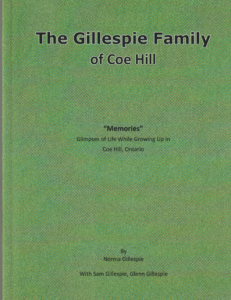
Even though I had already produced several booklets over the years, those were printed and combo-bound in my office (spiral spine). It had been about 10 years since I last published something. This new effort was using a professional, printing firm for the first time. Although I am happy with the results, it would have really helped if I had studied the publishing business of today before I began. Let me provide a bit of new knowledge that I learned.
- Purpose: Each of us wants to be remembered, to find some significance in a world that is rapidly changing, Preserving a history of the past has been mine for some time, after I retired from a medical and teaching career. What is your purpose in what you want to create? Will it bless someone, teach, remember the past, encourage? Those are the most valuable works to embrace. Finding your focus is important.
My own children and those of my siblings have limited or no knowledge of what we experienced growing up. Coe Hill was a farming community of about 200 people, with many men who had returned from World War II. Farmers used agricultural methods that no longer exist, except for being mentioned in a few websites, and found in old museums.
When I suggested writing the stories of our childhood and youth, both my brothers agreed. Suddenly we were busy sharing emails back and forth, and I started writing my own story.
We learned a lot about each other’s experiences, some of which were a surprise. Even though we lived in the same home, had the same parents, went to the same schools, we had different experiences and social contacts. Oh how the mind forgets as one ages, which can be very frustrating. What was the name of that woman who had the hair salon beside Sprackett’s Store? Who lived in that house across the road from the Fairgrounds?
I made a chart of the buildings of our village and got help to remember who lived in them back then. I now wish I had added that village chart to the book. Each of my siblings and I moved away at different times over the years. I returned to live there for awhile on the home farm, but it has been over 40 years now since Gillespies left the village. We are still remembered, as I enjoy meeting folk that I know on trips there to film tombstones and visit Mom’s grave. I give one story at the bottom of this page of an example of what it was like for a 12 year old in that community of Coe Hill. I honour the community now with research provided in the menu bar above.
My brothers and I wanted to honour Mom, who suffered so deeply, but was a kind, gentle woman and never got the recognition she deserved. The Dedication will preserve her memory, with its photos of her life and a brief summary. This isn’t her story, but her influence was a positive one. Thank you, Mom. Since Dad died when I was a child, and this website honours him, he was only briefly mentioned in this project.
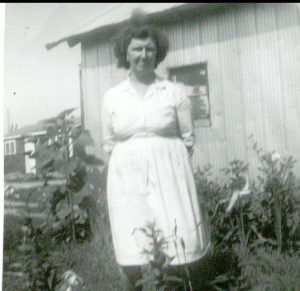
Mabel Miller Gillespie
My brothers and I each have our own section and chapters in the book, each section ending with a personal photo album. I then added more general family photos, a copyright page, intro and ending, and brief genealogy charts for both our parents, as far back has I have traced our history. 77 printed pages in the finished volume. Now we chat how we wished we had added even more memories.
There is a deep satisfaction knowing our family will be remembered in our small village a bit longer after we are gone. So, know what matters to you, as you begin your own creation. Take time to think that through.
2. Method:
Have no computer skills? Want to simply write out your story? Well, may I suggest you instead speak your story into a microphone and record it. Then hire someone to type it up for you. That is because it is hard to read someone’s writing or printing. Today’s audience is very selective because time is also a factor. The finished product will appear professional and attractive to interest a greater audience. I love things in print. But you can produce a book in print on a CD disk to view on a screen, or simply record it that way as well, for those with limited vision. I love having having my Mom’s voice on tape. So, make a slight adjustment, and begin. Here are more of my tips.
I like MS Office. to provide a basic page on which to compose my thoughts. MS Word for documents and for while MS Access for databases. Along with two other programs, like a good virus protector, it currently costs in the range of $100 to 150 Canadian each year. So, it is natural to want to use the computer programs one already has to create a publication. Oh, Oh! Not necessarily so, I learned. I will explain in a moment.
Budget matters. I am a senior on a pension. I have enough experience and Scottish blood to know the importance of income always being more than expenses. They do come close some days, but publishing should come from excess funds, not your cost of living ones. I cannot recommend you use credit to pay for a publication, unless you pay it off right away. Some people go crazy wanting to collect points on their cards. Credit cards can be helpful, especially for travel. However, let’s stay out of debt, and get rid of any you have to be freer to enjoy life and reduce anxiety.
I started typing my memories in a new MS Word document on my laptop, and retyped the drafts from arriving emails from my brothers. When it came time to send the finished computer files (one text; one of photos) to the publisher, I discovered they wanted it in a completely different format. This was a shock and upsetting. I knew very little about the new format and how to convert my document without having to retype it again. It had taken hours and hours of work, well over a month of serious typing and lining up photos on pages and trying to get the editing just perfect. I even printed out a copy of the book for reference, so the printing firm would know which picture went where on the pages. Although it helped, the files still had to be changed to pdf, page number deleted, margins changed and so on. Who knows what they will want when you start your own work in the future.
So, before you begin, several things I would suggest. Look at what others have done, even what publishers were chosen by them. That is found on the copyright page just inside the front pages of any volume. That will also help you visualize how to set up that page in your own book to protect your rights to your creation.
Do you want to use a local publishing firm, or should you explore other options? Will this be a commercial volume to sell to recover your initial costs and make a bit of profit? Or, is it just a record in a nice format to share with family and friends, as we did? I would suggest you find a publisher for a book, to consult with staff for their guidelines before you begin the process.
If you want a smaller volume in finished book size, as I did, you’d better check the cost. That became the deciding point for me and why I changed its size. It was very disappointing initially, but a strong awareness now of how my own perceptions and budget had influenced that final decision.
Consider if you will self publish with a printing firm, or hire someone else to do everything for you. Businesses, like Amazon, publish books but take a cut of the selling price. I know someone who used Amazon and they did an excellent job. I now know there are many companies who do this. I should have investigated this before I began, but I didn’t.
I felt confident of how I wanted the book to look, its divisions, its finished size and a full colour on all the photos. My brothers left all those details to me. I got a quote from a local printing office which was fine, until the final bill, which was something quite different and a bit upsetting. Those increased costs came from extra work they had to do and other factors. I must share some of that adjustment cost, but not all.
People have to make a profit to run a business, but even this is a learning curve. You might want to consider getting several quotes, because this is a competitive business– meaning use that to your advantage. There shouldn’t be much difference in those quotes, but learn in what way you can juggle giving up one feature in order to have another that you really want to keep.
Do have a budget. Have more funds than you expect to pay. Keep a sharp watch on costs, cause they add up so fast. Don’t forget about taxes, even postage and packaging, gas costs, or taxi trips to take and pick up the volumes. Cost to travel to distribute the books, once you have them, can add up a lot. All of our books were mailed to others. I sent the number of copies they requested to each of my brothers. They distributed their finished books at their own cost, and I did the same with mine.
Prices will keep climbing, so have a thousand dollars as a starting baseline for a small production. Remember, even the quality of the page, its weight 20 lb or 28 pound, cover stock or regular printing paper, shiny or dull finish, will affect cost. Colour makes the finished look beautiful, but black and white production is considerably less expensive to produce.
In a second volume, recently, I developed a monthly calendar with photos and brief text for all Gillespie family members in my family. My budget was considerably less than the book. I thought I might save a lot if I used an office supply business in Canada, rather than a publishing house. I did check about adding a bar code on the back cover. I now have my own copyright codes from the Canadian Government, which are free. In this case, the business said they do not add it. That was okay, since this volume is only a very small publication for family members and specific to one calendar year.
It can be a delicate task to gather information because some members may not want their information shared even within the family. Today’s society may not be aware that illegitimate births still cause deep humiliation for older family members. Find a way to protect that sensitivity, if you are aware of it. But it can also be exciting if you uncover a mystery in family history that is safe to share with all. There are many of these on this website.
I took the prepared calendar work, this time produced in Power Point and having saved to a portable storage device. Suddenly I faced several unexpected difficulties. First, why that program? Cause I use it a lot for teaching, for putting the words of songs on a screen to enlarge its viewing at church, and so on. I didn’t want to use MS Word again, pdf was costly, and this was just trying a new approach. I love experimenting with new ways of doing thing. Again, be selective to fit your way of doing things. There may be better ways of doing something, but that is not a deciding factor for me. It certainly is for many others.
The main discovery this time was with size adjustment, so watch for that when setting up whatever document program you use for typing. I wanted a finished product 8 1/2 inches by 11 inches folded in half for the calendar, thinking I could have the finished product resized smaller just before the calendar was printed. That didn’t work out. I didn’t know that this company had many calendar wizards to use in designing a product, even choice of finished size. Using their wizard would have saved me cost and time. That is, until I later did try it, and realized it just wasn’t what I wanted for this project.
So, sometimes even if others can produce something easier, less costly, even better appearance, that does not mean it meets what you or I want. Fortunately all is fine. I am very happy with the finished calendar. However, it took me four trips to and from the business before I got the finished product. So don’t be too fixed as to delivery promises. Yes, there will be challenges, but don’t let them ruin your day.
Transferring what one does at home on a computer screen does not always transfer exactly the same to another computer. In using a background wallpaper for the calendar cover page, the visual did not copy and transfer clearly at all, but blurred slightly. Again, another learning curve. I chose one in public domain from an Internet site. Bad choice. Fortunately, the finished look is nice anyway. Now I also realize my cover selection was probably too feminine for the men who got a calendar. A farm field might have gone over better for those living in Western Canada, but not for others. I didn’t take enough time with designing the cover. I realize that now.
We each have a colour palette we like. For the book cover I chose green, to represent our Irish roots. The calendar I wanted in pink and silver. I am very traditional, as one can see by the design of this website. My techie son urges to me to be make this site more modern, but I ignore him. I don’t usually like the modern style. I get a lot of pleasure out of creativity. I say let’s celebrate our individuality. We learn far more from our failures in life than our successes, and we need both. It is perception that comes into play and focus, and that changes over a lifetime.
I was accurate that the calendar would cost me half the price of the published book, even though both were finished by others.
Have a good idea how many volumes you want published and if the publisher will give a discount for higher volume. They need your business. Know the core cost per finished volume before you set the final selling price. If the volume sales are low for awhile, you may need to adjust that selling price over time, but that can go either way, up or down. So consider adding advertising to your budget, even management fees if you hire someone to market or produce a book for you.
Perhaps ask a friend to review your book before it is printed, to give their input, even editing advice. The printing company will send you the final computer copy before printing so you can make minor adjustments, if needed.
Both my brothers told me how many volumes they wanted. I added my own count, plus a few more for the total number of volumes I wanted printed. This was a fairly accurate count, when most were later distributed. The publisher actually gave me two more volumes than I ordered. There are probably details here that I never explored that you might find helpful in choosing the final production volume and details.
Our book was 44 double sided pages in full colour, and the calendar was 16 double sided pages, full colour and higher quality paper. Both used the 8 1/2 ” x 11 inch size, one portrait and the other in landscape mode. Thirty-two books cost about a thousand dollars, and 16 calendar just over $400 the year they were made.
Yes, it costs a lot to publish something and distribute it. I consider both projects, the book and calendar, as heritage gifts to my family and community–to preserve history and memories of our Gillespie/Miller family. Now each family member can know the story of our past. Some members have never met others. Now we all get a glimpse of faces and personalities, ages, birthdates, anniversaries, and full family portraits, and some stories of the past.
3. Reasons & Lessons Learned:
We did not do this to make a profit. Several people offered to pay for their volume, but in the end, that was not important to me, meaning please enjoy the gift. A copy has gone out to our families and friends who are still living from that period. It was fun exchanging a personal history book with some authors I know for one of theirs. I even got a request for a volume from a major historical society, and still have a few more copies for future needs.
I will, however, be far more cautious in future publications and find an easier way if I ever do another book. Not likely. Our purpose has been fulfilled. Thank you Wollaston Public Library in Coe Hill, who welcomed a copy and has it in their circulation library for local families in the area to enjoy.
It feels good to leave behind something personal of our life in that village, other than words on my Mom’s tombstone. Not gone yet, as each day is welcomed in this journey of life.
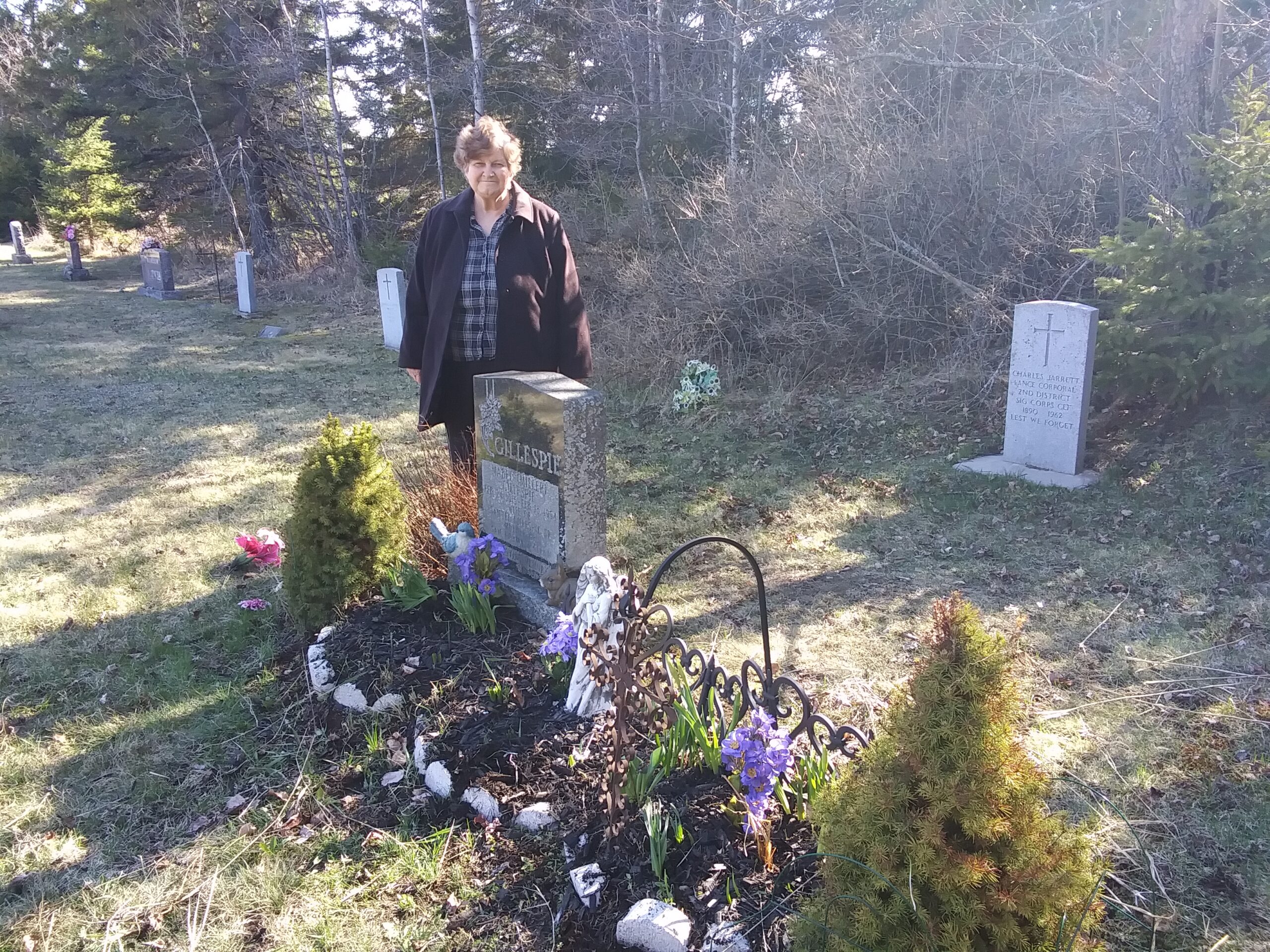
Norma at her Mom’s grave in Coe Hill.
4. More Considerations:
Consider who owns the copyright, the publisher or you? I did not know the significance of that. The book publisher charged me $30 for adding bar coding on the back cover, and offered to reduce this cost in our final financial arrangement. Bar codes are very important on publications in Canada. I knew nothing about bar codes until I started investigating this subject. I have now reserved several numbers on the government copyright website, all free, to self publish in the future.
Book cover I wanted green for my Dad’s Irish background on five lines of our family history. I no longer like the colour red, but our Scottish Gillespie roots are also not forgotten in that background colour palette. Red for Scotland. Colour matters to some of us, as my whole library was colour-coordinated. No, I wanted no photo on the cover, but others often do. It’s a nice place to provide a glimpse of the book’s purpose, advertising. Even the spine can have the title across it. Want a glossy look to the cover? Just realize that all of these things cost more.
The title was so simple. It fulfilled its purpose. I never considered another. The most important thing about this publication was that it brought my two brothers and I much closer as siblings. It promoted healing between us and opened up a channel of communication we never had before this publication and remains to this day.
![]()
5. Personal memories
I miss those days so much sometimes. When I was young in my early teens, I would be sent up the ladder in the barn and on top of the mow. With a hay fork, I grabbed the arriving loose hay and struggled to shove it around me, stomping on it to tramp it down. I had to keep the sides built up a bit and the top level. On the wagon below, the two men shoved their forks into the pile of hay on the wagon, as the team of horses rested. Sometimes as the men lifted together, they threw that dried grass all over me in fun. I would shake it off, sputtering and dusty, and frustrated, as I tried to keep up, not at all pleased.
The mow grew higher and higher, as more wagon loads were brought into the barn from the fields. Someone would drive the team, while another walked along beside it and forked the mounds of long, dried grass up onto the wagon as it paused. Backing the team into the barn to unload again meant a welcome rest for the horses. No baler back then. No tractor. They would all come much later. I love driving tractor and ploughing fields, turning the soil.. But sadly today we do not do much of that anymore.
That barn has fallen down now and those men are gone. The farm sold, and land broken up. I can remember the Holstein calves in the horse stalls; the time that Albert built the machine shed; and when he installed the first milking machine in the lower cow stable. There was a great big vegetable garden on the way to the house, cause I helped weed it.
I learned to milk a cow by hand as a little girl sitting on a stool. When I was punished by a stubborn one, who slapped her tail against my face and kicked out. Albert put the metal clamps with a chain on her back legs to stop that, and took over, while I moved to a gentler animal. I can almost hear the sounds and smell of that stable in my mind, as I pen these words. Each Holstein had her own place in that long line-up on a long, raised platform. The cows would walk in, sometimes pushing between others, to find their spot. I would help tie the metal chains around their necks, while they enjoyed their grain, then some hay until we were finished. Released, they would head out in single file down the lane…..
Years later, I worked for a modern dairy with purebred Holsteins in Prince Edward County. It hosted Japanese tours and had top of the line machinery, printouts on each cow’s performance, and a completely different milking system. It was never as enjoyable as the fun I had on this old farm, and growing up in a village where you knew most people.
Many times I walked through our woods and across those fields to get to and from the farm I loved. I often looked for cow tracks on the ground, as I hunted for the cattle at night, to drive them to Albert’s barn. Usually I would meet him with his border collie, who quickly nipped a heel of a slow poke. That herd roamed in many directions over our property that Albert rented. The cattle walked one behind each other, and their hooves dug paths in the fields and lanes as they moved over the same ground. Some of those grooves remain today.
I remember a fall day when I drove a team of horses to the field to rake hay. I was about 12 years old. The team walked along quietly until I turned them at the end of the field. Suddenly they would trot off, trying to hurry back to the barn. My feet didn’t touch the floor boards to brace and stop them. I would hang on to the reins, and yanked the chord as fast as I could to lift those banging tines to release the hay building up underneath. The horses stopped at the fence, and I gained control again. So glad I was still okay, as I bounced around quite a bit. Back and forth, up and down the field. No photo back then, but here is one I found online that looks just like my experience. The experiences of life that deeper our happy memories over a lifetime.

Yes, I have loved rural living all my life, but listen now to a city awakening in the background. Our memories give us comfort, sometimes. Takes a lifetime to learn to block the ones that don’t. This book, and this website, is a testimony of a history that gave me some of my happiest memories in my life.
![]()
I wish you well in your own publications. Here are a few others from my collection from years past.
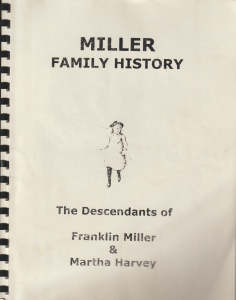
My Mom’s family history I prepared for her sister’s family.

One of three Gillespie volumes of the indexes with microfilm codings including Births and Deaths arranged in three ways, by date, by location and by first names. Handy volumes. Now all transcribed to this website. More records now in public domain, as a new year of records is released each spring.
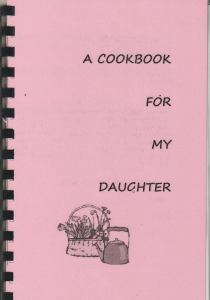
It was fun preparing this volume for my girl of family recipes. Both she and I still refer to it occasionally. It represents volumes of other interests I prepared, besides genealogy. Below is another
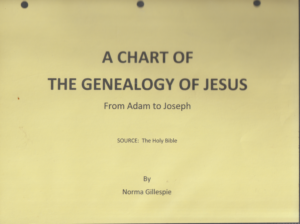
An in depth Biblical study from Adam to Jesus, with multiple time period charts showing listing of family linked people, events, prophets, world history, ending with notes. Investigating the mystery of the different genealogy accounts from King David to Joseph, earthly father of Jesus. Related archaeology researched. Satisfied my own belief about these difficulties for a Biblical scholar, but not including them in the notes provided.
![]()
